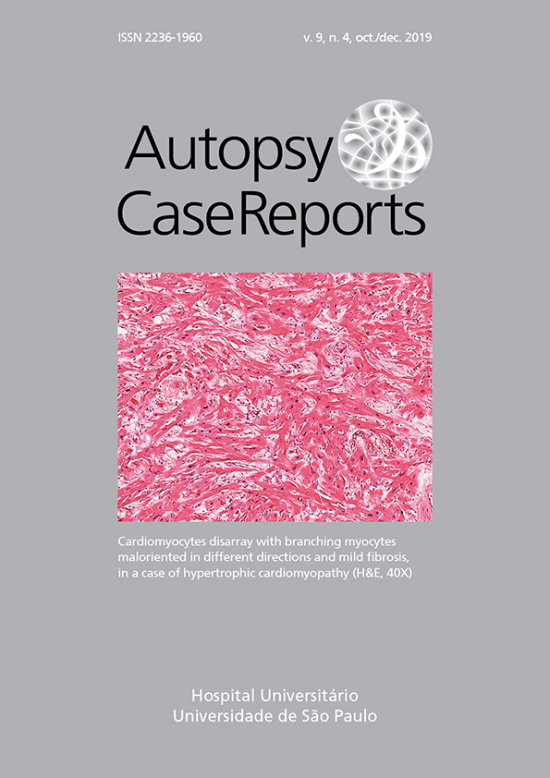Diarrhea: a missed D in the 4D glucagonoma syndrome
DOI:
https://doi.org/10.4322/acr.2019.129Keywords:
Glucagon, Necrolytic Migratory Erythema, Neoplasm Metastasis, Neuroendocrine Tumors, Paraneoplastic SyndromesAbstract
Glucagonoma is a rare and slow-growing pancreatic tumor that usually manifests as glucagonoma syndrome. It is mainly characterized by a typical Dermatosis named necrolytic migratory erythema (NME), Diabetes and glucagon oversecretion. Deep vein thrombosis and Depression complete this set. We report the case of an advanced glucagonoma with liver spread, where all these 4D symptoms occurred but a chronic secretory Diarrhea was the most relevant feature. A 65-year-old man was referred to our center to investigate multiple hepatic nodules evidenced by abdominal tomography. He had a recent diagnosis of diabetes and complained of significant weight loss (25 kg), crusted skin lesions and episodes of a large amount of liquid diarrhea during the past 6 months. On admission, there were erythematous plaques and crusted erosions on his face, back and limbs, plus angular cheilitis and atrophic glossitis. The typical skin manifestation promptly led dermatologists to suspect glucagonoma as the source of our patient’s symptoms. A contrast-enhanced abdominal computed tomography showed a hypervascularized pancreatic lesion and multiple hepatic nodules also hypervascularized in the arterial phase. Despite initial improvement of diarrhea after subcutaneous octreotide, the patient’s impaired nutritional status limited other therapeutic approaches and he died of respiratory failure due to sepsis. His high levels of serum glucagon were not yet available so we performed an autopsy, confirming the diagnosis of metastatic glucagonoma with NME on histology. Chronic diarrhea is not a common feature in glucagonoma syndrome; however, its severity can lead to serious nutritional impairment and set a poor outcome.
Downloads
Published
Issue
Section
License
Copyright
Authors of articles published by Autopsy and Case Report retain the copyright of their work without restrictions, licensing it under the Creative Commons Attribution License - CC-BY, which allows articles to be re-used and re-distributed without restriction, as long as the original work is correctly cited.



